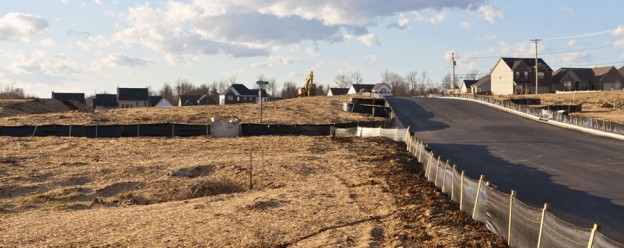When an inspector enters your job site to perform an inspection, the first place they are trained to look is the permit box. Usually, this is as far as they need to go to find a problem. Record keeping violations continually rank among the top offenses on construction sites in the state of Georgia and can carry a fine as large as $2,500 per violation, per day. Fines like these can add up quickly and cripple a company’s ability to turn a profit on a job. Let’s take a look at what you need to have available on site at all times.
“The primary permittee shall retain the following records at the construction site or the records shall be readily available at a designated alternate location from commencement of construction until such time as a NOT is submitted in accordance with Part VI.” – Part IV.F.1, GAR 100003
1. Notice of Intent (NOI) & Proof of Submittal
First, remember that your notice of intent needs to be filed via certified mail with return receipt at least 14 days prior to any type of construction activity on your job site. This form can be found on the GA EPD’s website under the Stormwater section. Once this is complete, you will need to keep a signed copy of the NOI along with the proof of submittal and any fee forms on site. Again, make sure you have a signed copy. A NOI without a signature will not be accepted.
2. Copy of the Erosion Sedimentation & Pollution Control Plan (ESPCP)
Every construction site in the state of Georgia that requires coverage under the NPDES General Permit calls for an Erosion Sedimentation & Pollution Control Plan (ESPCP). An approved copy of this plan needs to be on site at all times. If you prefer to keep a copy in your truck, make sure that you have an additional approved copy that can stay on the job site. Inspectors need to be able to access the plans during non-working hours, holidays, and rain days as well. Also, make sure that you redline your plans as your jobsite changes. For instance, if you move a stockpile of dirt from one area of the job to another, make sure these changes are reflected on the plan. Use a red pen to show the new location of the stockpile and sign and date it to complete the update. But remember, any time you are making changes to BMPs that have a hydraulic capacity (ponds, inlets, etc.) you can’t use the redline process. These changes need to be made by a design professional and approved by the local issuing authority and/or the State.
3. Design Professional Inspection Report (Seven Day Letter)
Once all of your perimeter BMPs, construction exits, and initial sediment ponds are in, you have seven days to schedule an inspection with the design professional who prepared the ESPCP. After this inspection is complete, you will need to retain a copy of this inspection in your logbook. This is a crucial, and often overlooked, step in the NPDES process.
4. Water Quality Monitoring Information
Your job site needs to be sampled at two different times during the course of construction, 1) at the completion of clearing and grubbing, and 2) after all mass grading is complete or 90 days after the first sample was taken. If at any point your samples return deficient results, you will need to continue sampling with each 0.5” rain event until you have readings within your allowable limits. These results will need to be submitted to the EPD via certified mail with return receipt and retained on site. Be sure to keep signed copies of the sampling results along with your receipts from the postal service.
5. Site Inspection Reports
All inspection reports will need to be kept on site at all times. Remember, there are three different types of inspections that occur for any given site. 1) Daily Inspections: These will cover fuel storage areas, construction exits, and a measurement of the daily rainfall. 2) Weekly / Post Rainfall Inspections: These inspections will look at all BMPs, outfalls, and any areas that have not undergone final stabilization. 3) Monthly Inspections: This inspection focuses on all areas of the site that have reached final stabilization.
6. Violation Summary
When an inspection of any kind results in the discovery of a violation, you are required to make note of it in two separate places, 1) in the inspection report that revealed the violation, and 2) in the Violation Summary section of your log book. The EPD also asks that these violations be reported to them within 14 days of discovery. Keep in mind that not every deficiency on site is a violation. Check out the EPDs Enforcement Actions for a few examples of what constitutes a violation.
7. Rainfall Data
It is essential to be aware of how much rain you receive on your job site. The EPD requires that you measure rainfall in 24-hour periods and keep the data in your logbook. Try and check the rain gauge at the same time every day in order to get an accurate representation of what’s really going on your site. Make it part of your routine first thing in the morning and ensure that you’re staying in compliance with this area of the permit.
Records Retention
The NPDES General Permit requires that all records related to the construction site be retained at the permittee’s primary place of business for at least three years from the date of the Notice of Termination (NOT). This period may also be extended by request of the EPD at any time.
Now that you know, there’s no excuse for not keeping your site up to date at all times. Remember, the permit box is the first place your inspector is trained to go when they enter your site. In their eyes, a well-kept logbook usually means a well-kept construction site.
—Article submitted by Jason Hand, May 2013—





